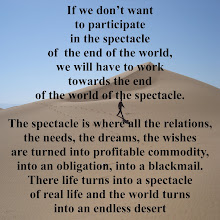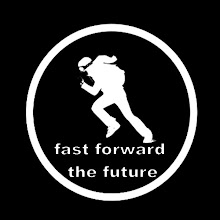


Michael Lowy
Morning Star: Surrealism, Marxism, Anarchism, Situation-ism, Utopia.
Introduction by Donald LaCoss (Austin: University of Texas Press, 2009).
When members of the surviving old guard of surrealism declared the movement over in October 1969 in Le Monde, there were many dissenters. International adherents to the idea that surrealism is a state of mind rather than a historical movement affirmed their continued loyalty to its revolutionary principles. Lowy locates these at the intersection of Marxism and anarchism, a mix that aims to pose a counterweight to capitalist rationalism and disenchantment (Max Weber) by re-enchanting the world. Myth, poetry, art created in a spirit of revolt by the unleashing of the forces of dream and the unconscious – these have been liberatory gestures and practices that are common to the subjects of Lowy’s engaging essays, from Benjamin to Debord, from Pierre Naville to Vincent Bouonore and Claude Cahun.
It is well known that Andre´ Breton, the founder and leader of the surrealist movement, embraced revolutionary Marxism in the “Second Manifesto of Surrealism” in 1930; at the same time, the founder of the surrealist movement, who insisted that “language has been given to man so that he may make surrealist use of it” was unlikely, from the start, to adhere to any party line. Lowy characterizes Breton’s Marxism as “libertarian,” a mix of the revolt against Western civilization and bourgeois norms of morality and normality, combined with the explosive force of poetry (Lautre´amont, Rimbaud) and the English gothic novel. When Breton visited Trotsky in Mexico in 1938, the important text they co-authored was the call “For an Independent Revolutionary Art,” which asserts the anarchist ideal of absolute freedom for artists. Breton conceived of this freedom as dialectical in the sense that artists were called to break away from the confining circles of rationality, decorum, and the “beautiful.” Breton was a Hegelian as much as a Marxist. In place of the old hegemonic myths (surrealists excoriated their civilization which had put in place the “myth of money”), they proposed the “morning star” that they linked to the mythical rebellion of Lucifer. Myth without religion – surrealist texts and exhibitions were well-known for proposing a new pantheon, many of its notables drawn from the figures of alchemy and the tarot which Carl Jung had already exposed as allegories of self-transcendence.
The ideal of freedom, which Lowy links to surrealism’s revolutionary romanticism, is the common thread that runs through all the essays. When allied with real political activism, surrealism is a force to be reckoned with, as the chapters on Claire Cahun and Guy Debord show. Cahun had joined the surrealist movement in 1932; two years later she penned the defense of revolutionary poetry, Les paris sont ouverts (“The bets are on”) in which she advocated the use of poetry for “indirect action,” leaving the reader open to draw his/her own conclusions. Literature will be most effective, she argued, if it is subversive and not propagandistic.
The next chapter in Cahun’s life – which many readers will discover for the first time in these pages – is a source of astonishment for all those who hear of it. When the German forces occupied the Channel Islands in 1940, Cahun and her life-companion Suzanne Malherbe put theory into action. Under the cover of appearing as harmless older women they circulated subversive anti-Nazi texts to the occupying soldiers, signing their names as the “Nameless Soldier.” In some cases they even produced anti-fascist photomontages whose source material was the Nazi magazine Signal. Their texts – hidden inside newspapers and magazines, deposited in Nazi mailboxes, left on parked cars or attached to fences – called on soldiers to desert or kill their officers. Remarkably, the two women operated for four whole years before they were eventually denounced by an informer. Only the end of the war saved them from the death sentence that had been meted out to them.
Guy Debord is another artist who put the arsenal of language and art in the service of revolution. Today, as Lowy acknowledges, the father of “situationism” is often dismissed as a superficial critic of mass media, or as a mere litterateur. Just as Cahun’s work is now being rediscovered, Lowy urges us to take another look at Debord, whose concept of the “society of the spectacle” was nothing less than a critique of “the whole economic, social, and political system of modern capitalism.” Situationism, he argues, lies at the base of the most audacious dreams and aspirations of ‘68. Debord’s nostalgic turn away from modernity was intended as an explosive and subversive force that had much in common with surrealism. Once again, the strategies are textual – Debord’s lengthy screenplay In Girum Imus Nocte et Consumimur Igni (a palindrome that roughly translates as “we wander in darkness and are consumed by fire”) cannibalizes existing texts and films and infuses them with new meaning.
The dark side of romantic rebellion that Lowy identifies in all his subjects is also linked with revolutionary pessimism, which is the core subject of the book’s longest and most central chapter on Pierre Naville, whose landmark essay “Revolution and the Intellectuals,” written in 1925–26 and read by the surrealists even before its publication in 1928, gave the impetus for the alliance between surrealism and Marxism. Lowy recounts that it was Naville’s infiuence that led Breton and other surrealists to join the Communist party in 1927. “Revolutionary pessimism” in Naville’s formulation meant an active, revolutionary engagement, a spirit akin to Goethe’s Mephistopheles (who describes himself as “the spirit that always negates”). In this chapter Lowy charts a clear course through the internal debates between different factions of the surrealists as they interfaced with different factions of the Communist Left in France and the Soviet Union in the 1930s. Along the way, Naville, who had embraced the Trotskyist Left Opposition, fell out of favor with Breton, who actually excoriated him in the dramatic turn toward Marxism that runs through the Second Manifesto of Surrealism in 1930. A reconciliation finally took place in 1938 when Naville facilitated the meeting between Trotsky and Breton.
Naville’s concept of organized, revolutionary pessimism impressed Walter Benjamin, who published the epochal essay “Surrealism: The Last Snapshot of European Intelligence” in February 1929. Benjamin correctly estimated the vast infiuence that surrealism would come to exert; in the opening lines of his essay, he compares himself to the observer of the vast energy generated downstream from what had appeared, in France, as a mere trickle. In a continuation of that metaphor, Benjamin writes that surrealism “harnessed the forces of intoxication for the revolution,” although he criticizes its “undialectical conception of the nature of intoxication” and the neglect of “the methodical and disciplinary preparation for revolution” (Selected Writings, Vol. II, Harvard University Press, 1999: 217). Thinking is for him a narcotic of the first order, and its “profane illumination” should make it possible for the “revolutionary intelligentsia to overthrow the intellectual predominance of the bourgeoisie and to make contact with the proletarian masses” (217). (Unfortunately the editor, has left out the more detailed chapter on Benjamin that appeared in the original French edition, so that the discussion of his important writings on surrealism is limited to some remarks in the Naville chapter.)
For those already interested in surrealism and its infiuence, many of these chapters provide welcome information on the fate of the surrealists, and Surrealism, after WWII. A final chapter on “the surrealist international since 1969” gives a historical account of the more recent surrealist publications, among them the Bulletin de liaison surre´aliste and Surre´alisme (Vincent Buonore, who with several French and Czech Surrealist friends put together La Civilisation surre´aliste in 1976, gets a chapter to himself). Today there are surrealist groups in Paris, Prague, Stockholm Madrid, Chicago, and Sa˜o Paulo, along with half a dozen new journals devoted to surrealism.
An appealing feature of this volume is the presence of art work by many of Lowy’s international surrealist friends, as well as some of his own drawings. Several of these amplify the themes of the book – Guy Girard’s “Rosa Luxemburg in front of the Tour St. Jacques” from 1993 imagines her in the context of Breton’s peregrinations in Paris with their multiple references to alchemy and the marvelous (Nadja) while Jean-Pierre Guillon’s “Couronne´e de Commune” from 1980 works as an illustration of Benjamin’s statement about revolution and intoxication.
The art work also comprises many contributions by women surrealists – the Prague surrealist Eva Svankmajerova and the Canadian Marie S. (alias “Ingatta”) whose “illuminated envelopes” are beguiling contributions to mail art. By themselves, these point to a salient aspect of present-day surrealism – the presence of impressive women artists and writers. A whole chapter is dedicated to the surrealist artist Ody Saban, a welcome supplement to the French edition.
Unlike the usual art “movements” destined to replace one another, Lowy argues, surrealism is a transhistorical cultural innovation like Romanticism. Its marginality is also its force, since its aims are necessarily subversive. The dominant metaphor continues to be that of the “starred mole,” a mythical creature who burrows underground, creating passageways and connections that eventually lead to the collapse of the superficial and visible world above. Lowy’s engaging book invites us to the positive labor of “re-enchantment,” providing models for active engagement and stimulus for further reading.
2010 Inez Hedges
Northeastern University
i.hedges@neu.edu
source: http://sdonline.org/53/morning-star-surrealism-marxism-anarchism-situation-ism-utopia/
Morning Star:
Surrealism, Marxism, Anarchism, Situation-ism, Utopia. by Michael Lowy
YOU CAN READ AND FREE DOWNLOAD THE BOOK HERE:
http://zinelibrary.info/files/Lowy%20-%20Morning%20Star%20-%20Surrealism,%20Marxism,%20Anarchism,%20Situationism,%20Utopia.pdf









8 comments:
The free download on that site is no longer working.
SMS is now universal and by far the easiest way to connect with your customers or employees. Now, it is even faster with the aid of API which enables you to send out programmable SMS in real-time to exchange information instantly.
It’s nearly impossible to find well-informed people in this particular topic,
but you sound like you know what you’re talking about! 경마사이트
If you keep it like this, I ll visit you every day.
The cool things here. I am very satisfied to see.
I am constantly surprised by the amount of information accessible on this subject.
I must say you have written a great article.
I’d like to thank you for the efforts you have put in penning this website.
Post a Comment